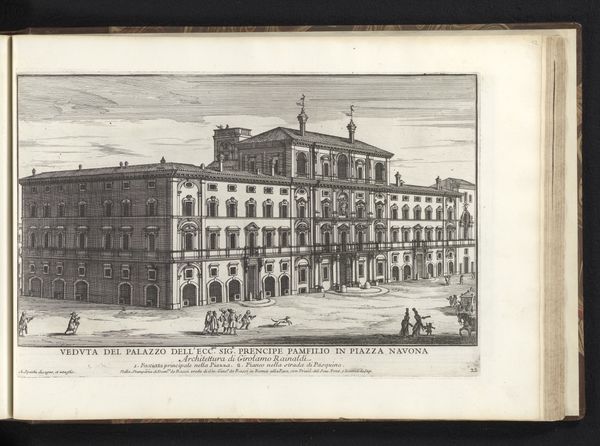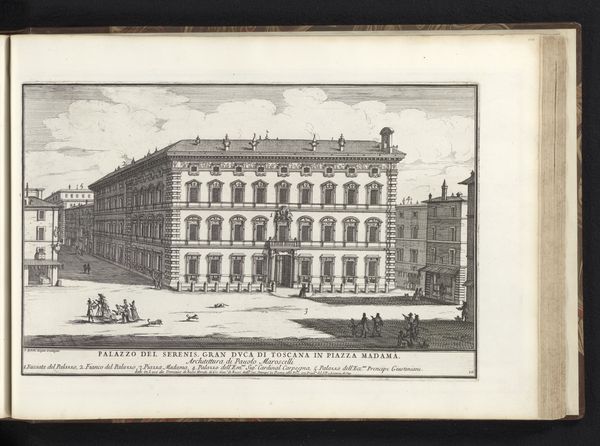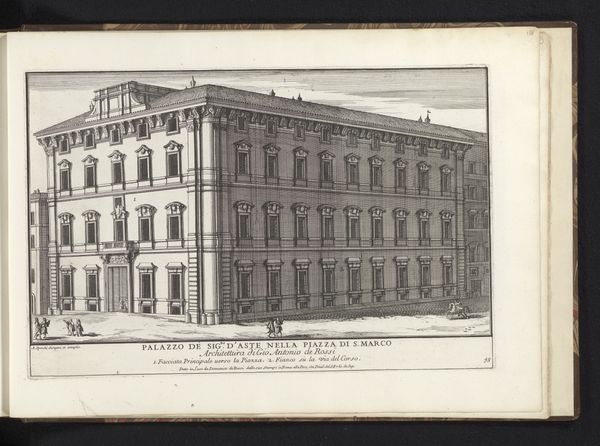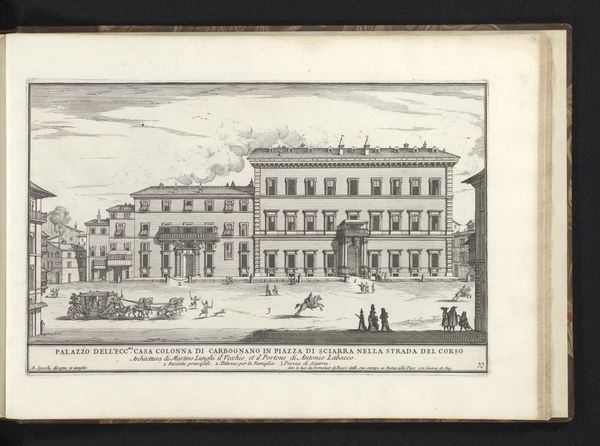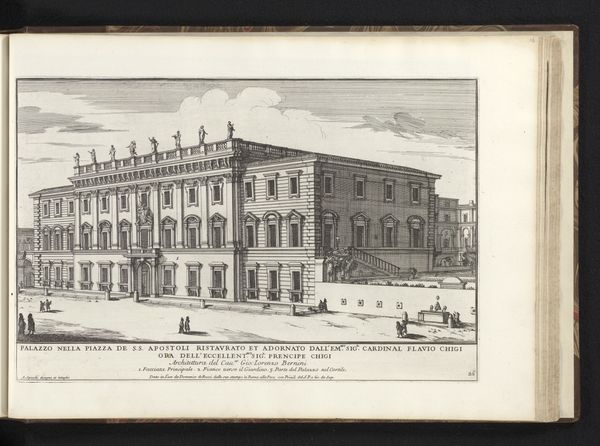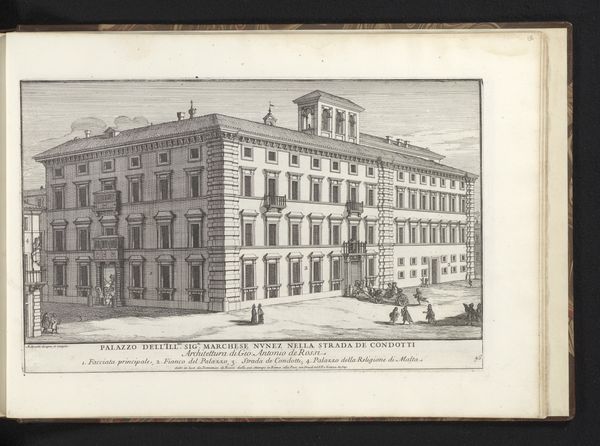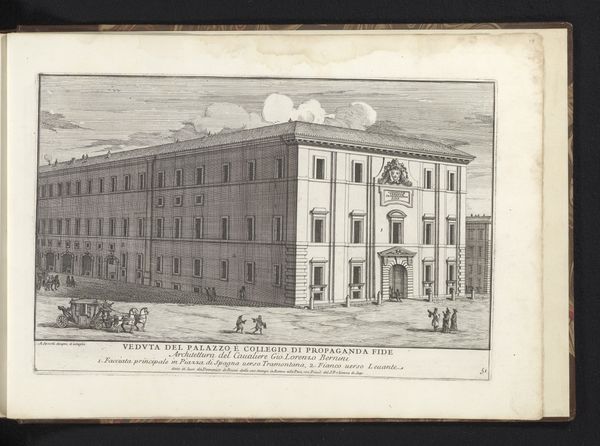
print, engraving, architecture
#
baroque
# print
#
cityscape
#
engraving
#
architecture
Dimensions: height 215 mm, width 330 mm
Copyright: Rijks Museum: Open Domain
Curator: Look at the incredible detail in this print titled "Palazzo Ruspoli te Rome," created around 1699 by Alessandro Specchi. The print, crafted with meticulous engraving techniques, captures the essence of this magnificent building in the heart of Rome. Editor: My initial impression is one of austere grandeur. The facade is so meticulously rendered that it almost feels impersonal, like an exercise in controlled power, not a living space. It feels like this grand, stoic palace just sits there, aloof from the everyday bustling city captured in miniature along the street. Curator: Indeed. That controlled aesthetic is quite typical of Baroque architecture, meant to inspire awe and demonstrate authority. The artist meticulously rendered the rhythmic pattern of the windows and ornamentation; this regularity speaks to a kind of imposing order. There is an attempt to depict an architectural embodiment of perfection, mirroring a very controlled vision of governance. Editor: And I find that interesting because, below, you see this vibrant scene – people strolling, dogs darting about—yet the palace remains untouched. I wonder what symbolic significance that juxtaposition might have had. Specchi seems interested in depicting this imposing figure with deference; a clear articulation of social power made visual. This kind of architecture becomes propaganda by another means. Curator: Absolutely. Buildings become embedded with collective identity, acting as anchors for cultural memory. This print disseminates the message, extending its sphere of influence far beyond the physical structure of the Palazzo itself, furthering its status as an emblem of power and authority. It would shape perception as well, fixing it into public imagination as something concrete and permanent. Editor: It also reveals how deeply architecture has always been tied to image circulation. Without such dissemination, how can an imposing building make its mark felt far outside Rome, as if claiming dominion across countries through sheer impression of scale? It is something for us to consider the impact and influence these images carry. Curator: Yes, thinking about this depiction’s legacy reminds me just how potent images continue to be, shaping our perceptions, both consciously and subconsciously, through repeated symbolic gestures that influence cultural perceptions across different eras. Editor: And for me, I see an early case study on the political and social stakes that are part and parcel to images when powerful institutions seek to define both how, and how well, they will be perceived in public life. Thanks to this print, such influence would long survive.
Comments
No comments
Be the first to comment and join the conversation on the ultimate creative platform.
